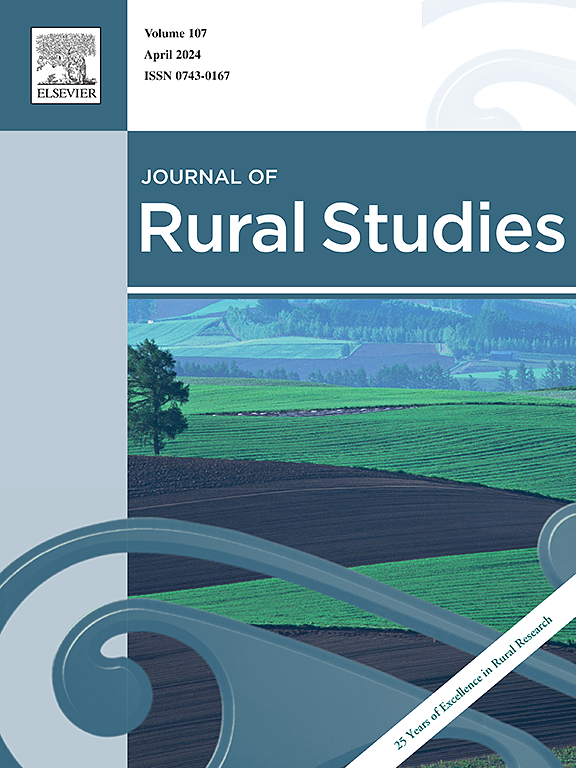Artificial intelligence and urban employment in China's agricultural Sector: Conditions for job creation across skill levels
IF 5.7
1区 社会学
Q1 GEOGRAPHY
引用次数: 0
Abstract
With the development of artificial intelligence, widespread concerns have arisen about labor substitution. This study conducts a novel analysis of the dual impact of artificial intelligence on urban employment within China's agricultural sector, and presents the sensitivity coefficient to identify the conditions under which artificial intelligence shifts from displacing jobs to generating new employment opportunities, using panel data from 31 provinces between 2010 and 2019. The study assumes that the sensitivity coefficient approaches zero between change of medium-skilled labor to change artificial intelligence capital, which causes employment creation. Therefore, the study tests the assumption, and get three key findings. First, a 1 % increase of artificial intelligence capital reduces urban employment in China's agriculture sector by 0.205 % for the low-skilled labor, 0.147 % for medium-skilled labor and 0.809 % for high-skilled labor. Second, by categorizing labor's skill levels into seven groups based on educational attainment, this study identifies that a positive creation effect is generated for high-skilled labor with graduate level, resulting in a 0.138 % increase in employment. Finally, mechanism testing reveals that artificial intelligence promotes employment growth among high-skilled labor with graduate level in China's agricultural sector by reducing the sensitivity coefficient, with the mediating effect accounting for 42.91 %. To mitigate the negative effects on low- and medium-skilled workers while fostering job creation among high-skilled labor, artificial intelligence should be implemented gradually and accompanied by targeted retraining programs.
中国农业领域的人工智能与城市就业:创造不同技能水平就业的条件
随着人工智能的发展,人们对人工替代产生了广泛的担忧。本研究利用2010年至2019年31个省份的面板数据,对中国农业部门人工智能对城市就业的双重影响进行了新颖的分析,并提出了识别人工智能从取代就业向创造新就业机会转变的条件的敏感系数。研究假设中等技能劳动力变化与人工智能资本变化之间的敏感性系数趋近于零。因此,本研究对这一假设进行了检验,并得到了三个关键发现。首先,人工智能资本每增加1%,中国农业部门的城市低技能劳动力就业减少0.205%,中等技能劳动力就业减少0.147%,高技能劳动力就业减少0.809%。其次,本研究根据受教育程度将劳动力的技能水平划分为七个类别,发现研究生水平的高技能劳动力产生了积极的创造效应,导致就业增加0.138%。最后,机制检验表明,人工智能通过降低敏感性系数,促进了中国农业部门研究生高技能劳动力的就业增长,其中介效应占42.91%。为了减轻对中低技能工人的负面影响,同时促进高技能劳动力创造就业机会,人工智能应该逐步实施,并伴随着有针对性的再培训计划。
本文章由计算机程序翻译,如有差异,请以英文原文为准。
求助全文
约1分钟内获得全文
求助全文
来源期刊

Journal of Rural Studies
Multiple-
CiteScore
9.80
自引率
9.80%
发文量
286
期刊介绍:
The Journal of Rural Studies publishes research articles relating to such rural issues as society, demography, housing, employment, transport, services, land-use, recreation, agriculture and conservation. The focus is on those areas encompassing extensive land-use, with small-scale and diffuse settlement patterns and communities linked into the surrounding landscape and milieux. Particular emphasis will be given to aspects of planning policy and management. The journal is international and interdisciplinary in scope and content.
 求助内容:
求助内容: 应助结果提醒方式:
应助结果提醒方式:


